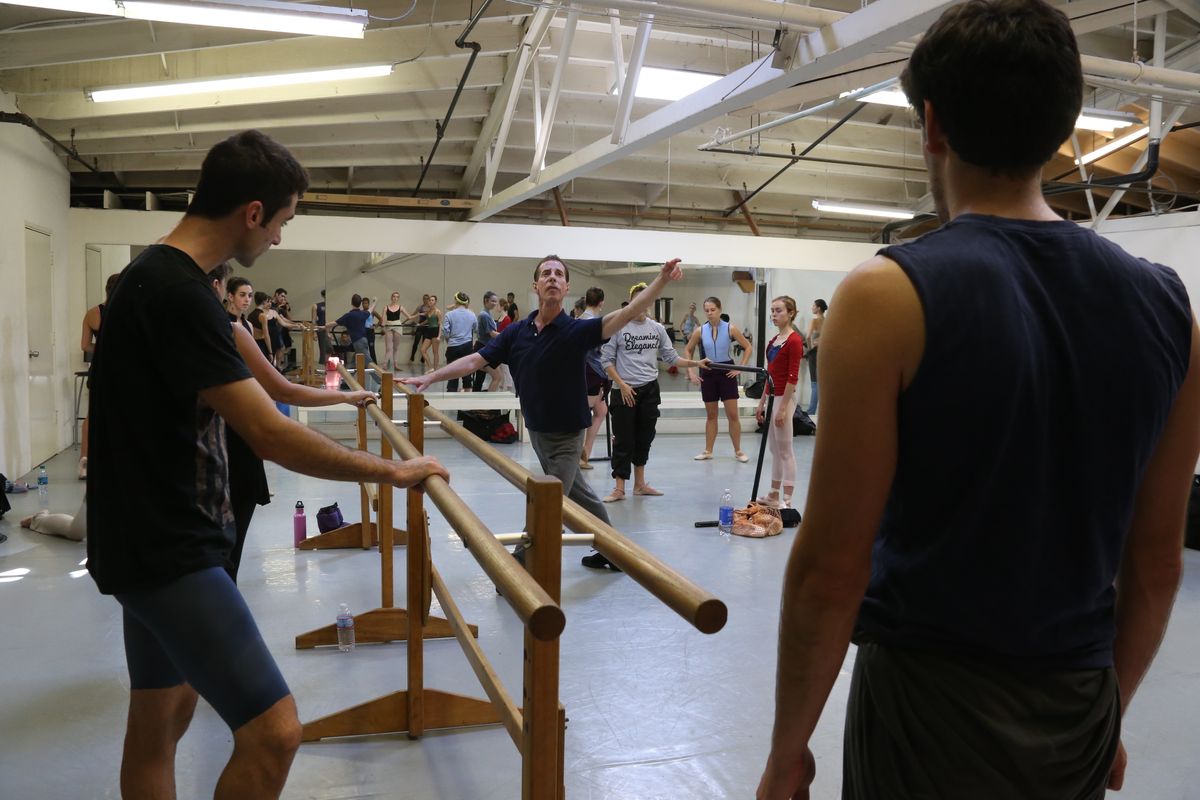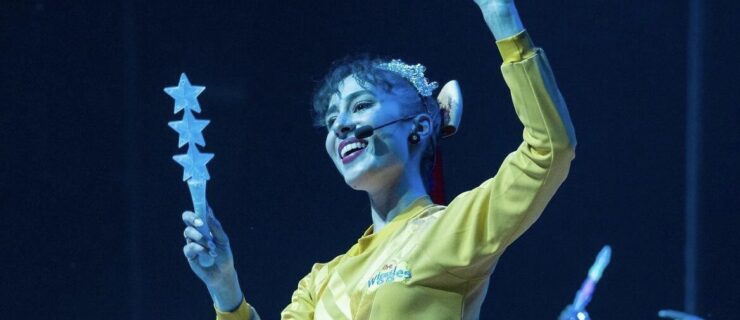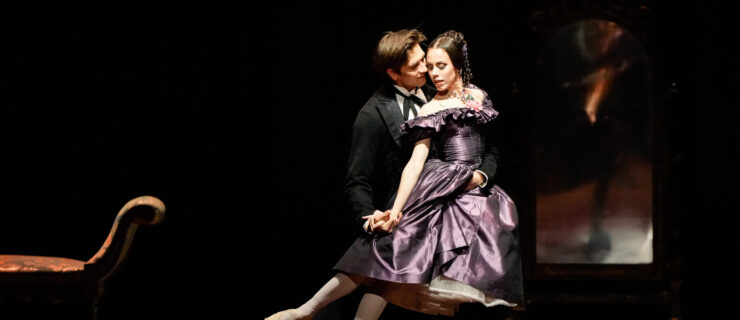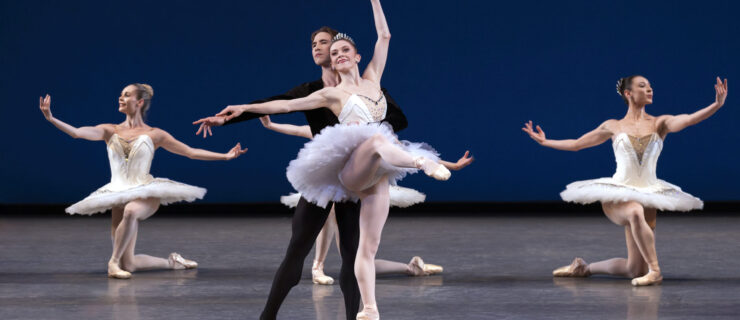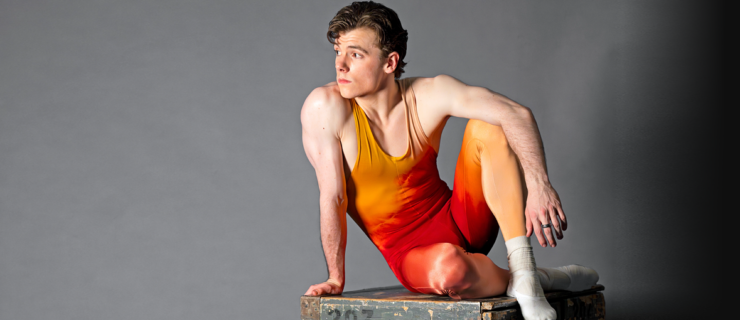Steven Wistrich's City Ballet of San Diego is a Hiding Gem Ready to Sparkle
This story originally appeared in the October/November 2016 issue of
Pointe.
City Ballet of San Diego is admired in Southern California for its diversity of dancers, a sizeable Balanchine repertoire, lively story ballets and regular accompaniment by full orchestra—all from a compact company. Steven Wistrich, artistic director of CBSD, recalls a 2007 performance, an “aha” moment, when he knew his company, then only 14 years old, had matured: The sisterhood of dancers in Balanchine’s Serenade delivered the aqueous grace that the ballet demanded. “Seeing Serenade onstage danced so beautifully was definitely a turning point for me,” says Wistrich. “I was so impressed with the style, technique and quality of the dancing.”
Balanchine repertoire forms a vital part of the company’s DNA: Since 1996 CBSD has danced 19 of his ballets, including Apollo, Agon, Concerto Barocco, “Emeralds” and “Rubies.” In many ways, CBSD, which has a close relationship with The George Balanchine Trust, has mirrored what Miami City Ballet has done in southern Florida: It’s curated a top-rate Balanchine repertoire in the region. While the City Ballet School of San Diego imports Balanchine teachers for its summer intensives, the organization offers more beyond the Balanchine legacy. Other classical techniques are taught in the company and the school, whose curriculum was developed with help from David Howard.
Wistrich’s family pitches in, too: His wife and resident choreographer, Elizabeth Wistrich, has created story ballets, such as Swan Lake and Don Quixote; his daughter, Ariana Gonzalez, is a dancer there; and his son-in-law, Geoff Gonzalez, who also serves as resident choreographer, has tailored contemporary ballets for CBSD. In the future Wistrich hopes to bring in works by prominent choreographers, such as Justin Peck and Christopher Wheeldon.
Wistrich’s career as a performer shaped the path of CBSD. He was a founding member of Boston Ballet, and then joined Nederlands Dans Theater and Norwegian National Ballet. But working with John Cranko as a dancer with the Stuttgart Ballet and being coached by Balanchine at Grand Théâtre de Genève influenced him the most. “When it was time to give back and establish a company, I felt like I was really qualified to do something special.” Wistrich went on to direct Ballet Arizona and Ballet Idaho, and then in 1992, he established a school with his wife in San Diego, which has trained a number of the company’s dancers. They started CBSD in 1993.
 Photo by Gary St. Martin, Courtesy City Ballet of San Diego.
Photo by Gary St. Martin, Courtesy City Ballet of San Diego.
He grew the company dancer by dancer, and carefully handled the finances, while building a board of directors. Nonetheless, nurturing a company hasn’t been easy in outdoorsy Southern California. “Ballet is a hard sell in San Diego,” explains Wistrich. “We’ve really had to develop our audience by educating them.” CBSD has integrated itself into the community with teacher instruction, school assemblies to introduce children to ballet, and outreach programs for at-risk youth.
The choices in how to run the company and cultivate dancers make it unique, says Wistrich: “In some companies I’ve worked with, people aren’t always treated as respectfully as they should have been—there was a lot of abuse in how dancers were treated. We treat ours with the utmost respect and dignity and are committed to each dancer’s personal development.” Erica Alvarado, who joined in 2011, agrees, saying, “We are competitive in a healthy, supportive way.”
Ariana Gonzalez, who rejoined CBSD in 2006 after dancing with Atlanta Ballet and Joffrey Ballet, loves the company’s family atmosphere and diversity. “We have different heights, shapes and body sizes, and everyone is an individual. We do the same kind of rep you would find in a major company, but because it’s smaller, you get more opportunities.” For example, when Alvarado joined the company after a stint with Milwaukee Ballet II, Wistrich immediately cast her as Juliet, one of her dream roles. “If I were in a bigger company, I might not have gotten that chance,” she says.
For the 2016–17 season, CBSD will perform Mark Schneider’s Esmeralda and the Hunchback, Elizabeth Wistrich’s Carmen and The Nutcracker, and contemporary works by Geoff Gonzalez. One program features Balanchine’s La Source and Tschaikovsky Pas de Deux, and the company will premiere its first Jerome Robbins ballet, Afternoon of a Faun, and Peter Martins’ Hallelujah Junction.
As the company grows, Wistrich wants the repertoire to grow, too. “I’ve always wanted to do the full-evening Jewels,” he says. “That’s a goal.”
City Ballet of San Diego At a Glance
-
Number of dancers:
32, including 5 apprentices -
Length of contract:
26 weeks -
Starting salary:
No less than $250 per week (non-union company) -
Performances per year:
30, including touring up to two hours outside of San Diego -
Website:
cityballet.org
Audition Advice
CBSD doesn’t hold cattle-call auditions, but allows dancers who have submitted videos and resumés to take company class, by invitation only, for a few days. Most dancers, however, are selected through CBSD’s three-week summer intensive. “I look for dancers who are intelligent—right away they’re picking up the steps,” says artistic director Steven Wistrich. “I look for personality—if they are dancing from the inside out rather than the outside in. I really like dancers who have a voice, who have something to express—with a light in their eyes. They shine.”
